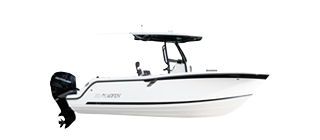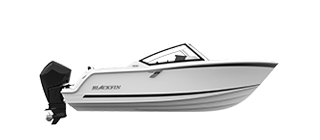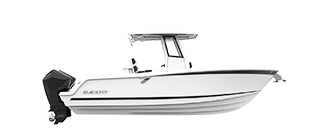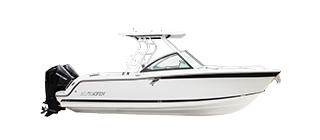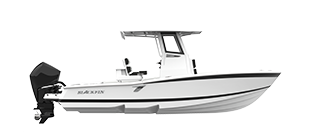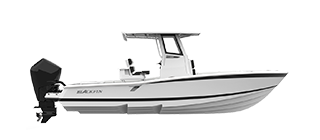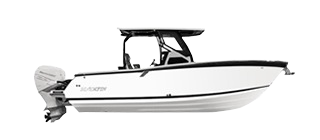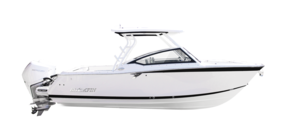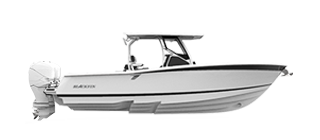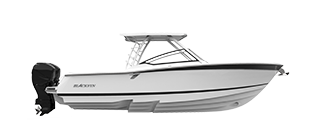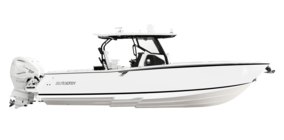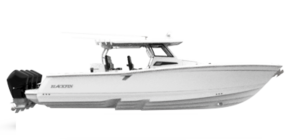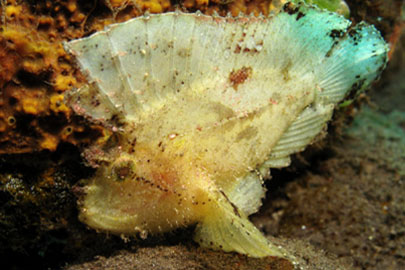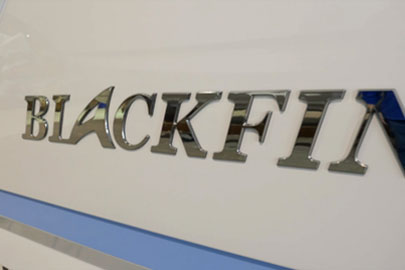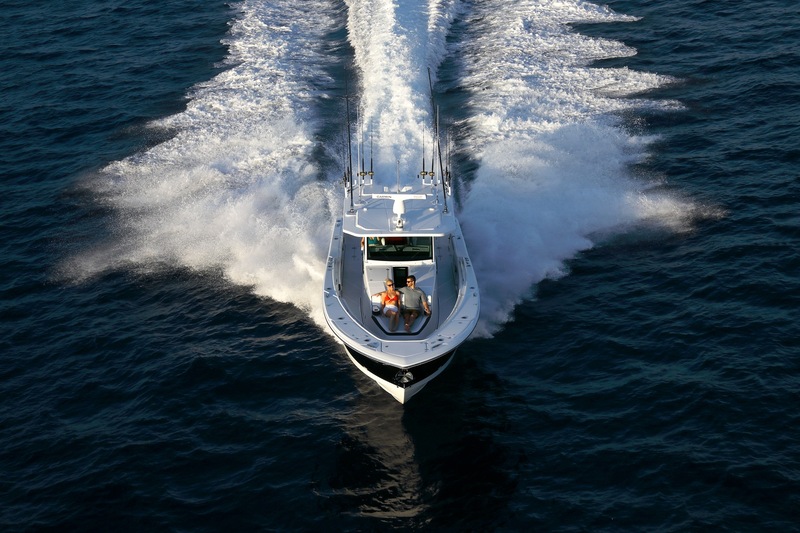
The surface seems placid enough—barely a ripple disturbing the dawn glow reflecting off the water. Yet beneath this deceptive calm, powerful forces silently shape every aspect of the marine environment. Tides and currents—the hidden rivers within the sea—influence everything from fish behavior to vessel performance to navigation safety.
For offshore anglers, understanding these forces transforms random hope into strategic advantage. The ability to read, interpret, and anticipate water movement separates consistently successful captains from those perpetually wondering why others catch more fish. And while the knowledge component remains essential, equally important is operating a vessel specifically designed to work with these forces rather than constantly fighting against them.
Let's explore how to develop both the knowledge and practical skills needed to master tides and currents—and how the unique design elements of Blackfin Center Console boats provide distinct advantages in navigating these dynamic conditions.
Understanding the Basic Forces
Before diving into practical applications, establishing fundamental understanding of the forces at work creates necessary foundation for effective decision-making on the water.
Tides represent the most predictable water movement pattern, driven primarily by gravitational interaction between Earth, moon, and sun. This gravitational relationship creates cyclical rising and falling of water levels— typically experiencing two high and two low tides daily in most locations (though some areas experience only one cycle daily due to geographic features).
The actual height difference between high and low tide varies dramatically by location. While open ocean areas might see minimal variation, coastal zones with specific geographic features can experience tidal ranges exceeding 20 feet. Understanding the typical range in your operating area allows anticipation of associated current strength, as greater water volume movement generally produces stronger currents.
Currents, meanwhile, come in several distinct forms that affect offshore anglers. Tidal currents—water movement resulting directly from rising or falling tide levels—typically run strongest in channels, inlets, and areas with restricted flow. These currents follow predictable directional patterns based on tide phase, with flood currents accompanying rising tides and ebb currents accompanying falling tides.
Offshore environments also experience non-tidal currents, including major oceanic flows like the Gulf Stream, wind-driven surface currents, and deeper thermocline movements. These currents often exhibit more complex patterns than tidal flows, requiring different observation and prediction skills.
The interaction between these forces—tidal movement, permanent currents, wind influence, and bottom topography—creates the complete water movement picture that offshore anglers must interpret. While initially complex, recognizable patterns emerge with consistent observation and experience.
Reading Water: The Visual Indicators
The ability to "read" water—identifying current direction, speed, and behavior through visual observation—represents perhaps the most valuable skill in an offshore angler's repertoire. This observation-based approach provides immediate, location-specific information that complements broader forecasts and predictions.
Surface texture offers the most accessible indicator of current activity. Areas where opposing currents meet create distinctive ripple patterns, often appearing as long lines of small standing waves. These current edges frequently concentrate baitfish and consequently attract predatory species, making them prime fishing targets. The elevated helm position of center console designs provides ideal vantage points for spotting these productive zones from significant distances.
Color changes represent another critical visual indicator, particularly offshore where water masses with different characteristics converge. The distinct boundaries between green coastal water and blue offshore water, often called color breaks, typically indicate current edges where temperature, clarity, and sometimes salinity differences create concentrated feeding zones. The unobstructed visibility from a center console helm allows identification of these subtle color transitions from maximum distance.
Floating structure—from natural debris to man-made objects—reveals current direction and approximate speed through movement and orientation. Even small items like floating grass pieces or bubbles provide accurate information about water movement at the surface level. The ability to maneuver precisely around such indicators represents a significant advantage of center console designs, which combine responsive handling with excellent visibility.
Bottom structure interaction with current creates predictable patterns valuable for both fishing and navigation purposes. Areas where current meets structure—like offshore reefs, shipwrecks, or natural ledges—produce characteristic surface signs including slicks (unusually smooth water areas), upwellings, and sometimes visible pressure waves. The draft characteristics of Blackfin Center Consoles allow close approach to structure while maintaining safe clearance.
Predicting Fish Behavior Based on Water Movement
Understanding how various species respond to current conditions transforms general fishing knowledge into precise location and presentation decisions. While each species exhibits unique behavioral patterns, several fundamental principles apply broadly across most offshore gamefish.
Predator positioning relative to current typically follows energy conservation principles. Most species orient themselves facing into current, allowing constant water flow to bring both oxygen and feeding opportunities while minimizing energy expenditure. This positioning behavior creates predictable holding locations around structure, with fish typically concentrated on current-facing aspects rather than evenly distributed.
Baitfish movement patterns responding to current create the foundation of predator location strategies. During stronger current periods, baitfish typically seek refuge in current shadows behind structure or concentrate along edges where varying current speeds create natural collection points. The fishability of Blackfin Center Consoles—with 360-degree access around the vessel—allows targeting these concentration points from optimal angles regardless of current direction.
Feeding activity intensity often corresponds directly with current strength, though following bell-curve distribution rather than linear relationship. Most species exhibit peak feeding during moderate current periods, with activity declining during both slack water conditions and extremely strong flow. This pattern necessitates timing fishing efforts to coincide with optimal current phases rather than solely focusing on traditional dawn/dusk periods.
Depth distribution of both bait and gamefish shifts predictably with current strength. Stronger flows typically push activity deeper in the water column as surface conditions become less favorable for feeding. This vertical distribution change requires corresponding adjustment in presentation depth and technique—transitions easily accomplished from the spacious deck layouts of center console vessels.
Species-specific current preferences highlight the importance of matching fishing efforts to conditions. While some offshore predators—like wahoo and tuna—often prefer strong current scenarios, others—particularly snapper species—feed more actively during moderate or slack periods. Understanding these preferences allows targeting appropriate species based on prevailing conditions rather than pursuing unsuitable targets.
Navigation Challenges and Solutions
Beyond fishing advantages, mastering tides and currents dramatically improves navigation safety, efficiency, and vessel handling in challenging offshore environments. Several key principles particularly apply to center console operation.
Course plotting must account for current influence on both direction and speed, especially during longer offshore runs. The basic principle of "ferry angle" navigation—pointing somewhat into current to maintain straight-line progress toward destination—requires continuous adjustment as conditions change. The responsive handling and clear sightlines of Blackfin Center Consoles facilitate these ongoing course corrections without compromising efficiency.
Fuel consumption varies dramatically based on current relationship to travel direction. Running against strong current might increase consumption by 25- 30% compared to identical distance with neutral or favorable current. This reality necessitates conservative range planning, particularly when operating near maximum vessel range capabilities. The remarkable fuel efficiency of properly designed center console hulls provides valuable margin in these scenarios.
Inlet navigation presents perhaps the most consequential current-related challenge for offshore vessels. The combination of tidal flow, wave action, and often restricted navigational space creates complex handling conditions requiring both knowledge and appropriate vessel design. The deep-V hull profile, adequate power, and responsive handling characteristics of quality center consoles provide significant safety advantage in these environments.
Anchoring in current requires special consideration for both technique and equipment selection. Current strength often necessitates significantly more scope than wind alone would require, along with heavier anchor selection than might seem necessary based solely on vessel size. The uncluttered foredeck design of center console boats facilitates proper anchor deployment even in challenging conditions.
Docking procedures change substantially depending on current direction and strength relative to slip orientation. Understanding how current affects slow-speed maneuverability allows development of appropriate approaches regardless of conditions. The often-standard bow thrusters on larger center console models provide additional control precision during these critical moments.
Mastering Center Console Handling in Current
The specific design elements of center console boats create both advantages and challenges when operating in strong current conditions. Understanding how to maximize these design characteristics transforms handling difficulties into operational advantages.
Weight distribution significantly impacts vessel behavior in current situations. Center console designs—with their open layouts and distributed storage options—allow strategic weight placement that optimizes handling characteristics. Moving weight forward typically improves tracking ability in following current conditions, while balanced distribution enhances responsiveness during cross-current navigation.
Engine trim adjustment creates dramatic handling differences when navigating various current scenarios. Slightly increased trim (raising engine) often improves tracking ability and reduces wandering tendencies when running with current. Conversely, decreased trim (lowering engine) typically enhances authority when maneuvering against strong flow. The accessible helm controls of center console layouts facilitate these adjustments without diverting attention from surrounding conditions.
Multi-engine advantages become particularly apparent during precise current navigation scenarios. The ability to operate engines at different throttle settings—or even in opposing directions during extreme situations— provides unmatched low-speed maneuverability in current. This operational flexibility proves invaluable when positioning for structure fishing in strong flow or navigating crowded areas where precise control supersedes raw power.
Drift fishing techniques rely fundamentally on understanding the relationship between current, wind, and vessel design characteristics. The wind profile of center console boats—typically higher forward and lower aft when at rest—creates predictable drift patterns relative to current direction. This knowledge allows strategic positioning upwind/up-current of target areas to execute precise drifts across productive zones.
Low-speed maneuvering in strong current requires technique adjustments specific to center console designs. The combination of shallow draft, significant wind exposure, and typically higher horsepower-to-weight ratios necessitates more conservative control inputs than deeper-draft vessels might require. Small, incremental throttle and steering adjustments generally prove more effective than larger corrections that can quickly become exaggerated by current forces.
Essential Tools for Current Mastery
Beyond vessel handling techniques, several technological and planning tools dramatically enhance ability to work effectively with tidal currents rather than constantly fighting against them.
Tide prediction resources have evolved from basic printed tables to sophisticated applications providing location-specific forecasts accounting for numerous variables. Modern options incorporate lunar phase, barometric trends, and seasonal factors to deliver remarkably accurate predictions. Integration of this information into fishing plans—particularly for structureoriented species—often makes the difference between exceptional and disappointing results.
Current meters—both fixed-location data sources and onboard measuring systems—provide real-time information beyond visual observation capabilities. This objective data proves particularly valuable when operating in new areas without established experience base or when conditions limit visual assessment. The multiple electronics mounting options on Blackfin helm designs accommodate dedicated current monitoring displays without compromising visibility of other critical information.
GPS tracking functionality with current vector display offers game-changing advantages for both fishing and navigation applications. This technology demonstrates actual vessel movement over ground versus heading—often revealing surprising differences in current-affected environments. The clean helm layouts of modern center consoles allow intuitive positioning of these displays for easy reference while maintaining awareness of surrounding conditions.
Autopilot systems with current compensation capabilities transform longdistance runs in current-affected areas. Rather than requiring constant manual adjustment to maintain course, these sophisticated systems automatically calculate and implement necessary corrections. The result significantly reduces operator fatigue during extended offshore journeys—a crucial safety factor often overlooked in discussions of current management.
Mobile device applications specifically designed for tide and current visualization provide remarkable planning advantages. These tools typically offer time-lapse animations showing predicted water movement throughout the day, allowing identification of optimal fishing periods, efficient travel windows, and potentially challenging navigation timeframes. This advance planning capacity transforms reactive current response into proactive strategy development.
Reading Seasonal Patterns
The relationship between tides, currents, and fishing success follows seasonal patterns that create predictable opportunities for prepared anglers. Understanding these larger cycles allows development of calendar-based strategies targeting peak conditions.
Spring transition periods typically feature increasing current strength as winter patterns give way to more dynamic summer conditions. This gradual intensification often coincides with species migration patterns and baitfish movements, creating prime opportunities for anglers who track these correlations. The offshore capability of properly designed center console vessels allows pursuit of these seasonal patterns regardless of distance from port.
Summer periods generally present most consistent strong current scenarios, particularly in areas affected by thermal oceanic currents. The combination of tidal movement, wind-driven surface current, and larger oceanic patterns creates complex but predictable conditions that concentrate pelagic species along edges and convergence zones. The remarkable stability of Blackfin Center Consoles, even in choppy conditions created by opposing wind and current, allows comfortable fishing during these productive summer scenarios.
Fall transitions often feature gradually moderating current strength as summer patterns diminish, though punctuated by storm-related intensifications. These periods frequently produce outstanding fishing opportunities as predatory species feed aggressively in preparation for seasonal changes. The weather protection afforded by center console designs with appropriate features allows safe and comfortable fishing during these sometimes challenging but productive transition periods.
Winter patterns typically present reduced current strength in many regions, though exceptions exist in areas dominated by major oceanic currents. This moderation often concentrates fishing opportunities into specific windows where minor increases in current flow trigger feeding activity. The versatility of center console vessels—capable of fishing everything from shallow bays to offshore environments—provides maximum adaptability during these more limited winter opportunities.
Lunar cycle influences on both tide height and current strength create predictable monthly patterns independent of seasonal cycles. The strongest tidal movements—occurring around new and full moon phases—generate corresponding current intensity that significantly impacts fishing success for most species. Understanding these monthly patterns allows concentration of effort during peak periods when fish activity typically intensifies.
Developing Personal Current Mastery
The journey from basic understanding to intuitive mastery follows a progression familiar to accomplished offshore anglers. Several approaches accelerate this development process regardless of experience level.
Journal-keeping focused specifically on current conditions correlated with fishing success provides invaluable personal reference material. Recording observations about current direction, strength, and visible indicators alongside specific catch information reveals patterns that might otherwise remain unrecognized. The comfortable helm seating of center console designs facilitates brief documentation periods without creating excessive distraction from fishing activities.
Mentorship from experienced anglers familiar with local current patterns dramatically accelerates learning progression. The specific indicators, seasonal patterns, and productive techniques often vary significantly between geographic regions, making location-specific knowledge particularly valuable. The generous deck space of center console boats comfortably accommodates multiple anglers, creating ideal mentoring environments.
Technological integration—comparing electronic data with personal observation—builds pattern recognition capabilities that transcend individual information sources. The practice of consciously comparing what electronics indicate about current with what can be visually observed develops the pattern recognition capability characteristic of truly accomplished offshore anglers. The electronics integration capabilities of modern center consoles facilitate this comparative process.
Chart study focused specifically on identifying likely current concentration points—areas where bottom contours, channel orientations, or structure placement create predictable water movement patterns—develops the anticipatory thinking essential for consistent success. This preparation allows development of fishing plans targeting specific conditions rather than hoping for fortunate encounters. The navigation station layouts of quality center consoles provide ideal environments for this pre-trip analysis.
Single-variable isolation—intentionally fishing similar structures under different current conditions—accelerates understanding of how this critical factor influences results. This scientific approach identifies patterns that might remain obscured when multiple variables change simultaneously. The operational range and versatility of center console vessels makes this comparative approach practical through access to diverse fishing environments.
The Next Level: Putting It All Together
True mastery emerges when knowledge transitions from conscious application to intuitive understanding—when reading water becomes as natural as reading text on a page. At this level, current awareness transforms from isolated skill into comprehensive approach informing every aspect of offshore operation.
Strategic planning based on predicted current conditions begins to drive decision-making about everything from departure timing to fishing location selection to species targeting. Rather than fighting against adverse current or hoping for favorable conditions, operations revolve around intentionally leveraging natural patterns. The versatility of center console designs supports this strategic approach through adaptability to various fishing techniques and environmental conditions.
Presentation refinement based on current-specific fish positioning enhances effectiveness across all fishing methods. Understanding exactly how gamefish orient themselves relative to current direction at specific structure allows precise lure presentation into strike zones rather than general area coverage. The fishability of properly designed center consoles—with their 360-degree access and stable platforms—facilitates these precise presentations regardless of current direction.
Efficiency optimization through current leveraging dramatically improves both fishing productivity and overall vessel operation. From using current to control drift speed and direction to planning running routes that maximize favorable flow advantage, every aspect of operation incorporates current awareness. The remarkable fuel efficiency of quality center console designs extends these advantages through maximized range capabilities.
Safety enhancement through thorough current understanding perhaps represents the most valuable mastery outcome. From anticipating challenging inlet conditions to recognizing how current affects sea state in specific areas, this knowledge directly impacts crew wellbeing. The seaworthiness inherent in properly designed center console hulls complements this knowledge with vessel capabilities specifically engineered for offshore conditions.
For offshore anglers pursuing this mastery, few tools serve better than a thoughtfully designed center console boat. The combination of visibility, maneuverability, stability, and fishability—hallmarks of quality designs like Blackfin—creates the ideal platform for both developing and applying the skills that transform challenging conditions into exceptional opportunities.
The water's surface might appear deceptively simple at first glance, but those who learn to read its subtle language discover an entirely new dimension of offshore experience. The flowing forces beneath the surface—when understood rather than simply endured—transform from obstacles into advantages for those prepared to master their secrets.
Bookmark & Share
User Comments
Be the first to comment on this post below!
Previous Article
Next Article
Most Popular Articles
- Blackfin Fishing Boats - The Legend Lives On | Blackfin Boats
- The Blackfin 272CC ? Ranked Among The Very Best Fishing Boats of 2018!
- How to Acquire Your Boat Captain?s License in Florida
- Blackfins new 33? debuts at the 2018 Fort Lauderdale International Boat Show!
- Top 5 Tips for Buying Your First Fishing Boat
- What is the Best Time to Buy a Blackfin Fishing Boat?
- 5 Reasons Why Blackfin Boats are Every Angler?s Dream!
- Center Console Boats Guide - Advantages & Benefits


